
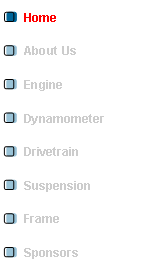
|
Home |
|
SAE Background The FSAE program started in 1978 by the Society of Automotive Engineering as was known as the Mini-Indy Program. As time went by the competition grew and evolved to become internationally recognized. Today, the FSAE competition is used to simulate a situation where a team of student engineers is asked to build a proposed open wheeled Formula style race car in a fashion making it eligible for mass production. The cars built by each school compete in both Static and Dynamic events. The project uses the cars to allow each team of engineering students to apply knowledge from classes and previous course work, and gain work experience to further prepare us for the working world.
Introduction The intent of Bradley University’s Formula SAE car is to develop and implement an innovative design concept while staying under budget as well as meeting all critical design requirements imposed by our client. At Bradley University, we are taught the economic perspective of any good engineering process. This financial constraint forces us to weigh every decision that is made on the vehicle.
Another aspect our team will consider is the time constraint; this constraint forces a timely response to any problem that is accompanied in the project. This allows all members to assess tradeoffs in the decision making process that will yield logical solutions to real world engineering problems. Critical customer requirements are also imposed, allowing for an acceleration run <5.0 seconds, a weight of less than 470 lbs, and a total vehicle cost less than $10,000.
The design intent of the Bradley University 2014 FSAE vehicle is to produce a safe, ergonomically correct, aesthetically pleasing, and economically viable vehicle. All while retaining race ready performance integrated on a platform that is user friendly to all levels of professional driving skills.
Some key features integrated onto the vehicle to meet the critical customer requirements will entail using a continuously variable transmission (CVT), a suspension system capable of handling a dynamic response of a 2g turn, as well as a programmable fuel injection system allowing for key tuning features based on fuel economy or performance.
Design Goals The goals of Bradley University’s 2014 FSAE team include the following: -Producing a economically viable vehicle -Benchmark in acceleration event of < 5 seconds -Scores in all dynamic/static events at Michigan competition -Weight reduction, a vehicle must have a wet weight under < 470lbs. -Reliability, a vehicle that can handle a 2g turns, validated using Finite Element Analysis (FEA) -Extracting maximum performance out of a vehicle while designing to last 200 hours under race conditions -Ergonomics -Performance, tuning for restrictor, transferring power
Bradley University’s Past Involvement in FSAE Bradley University has been participating in the FSAE Michigan event since 1997. The best overall finish of a Formula SAE competition car, Designed and built by Bradley engineers, happened in the year 2007 where they finish 29th place in the overall competition. Our four teams will work together in an effort to achieve a running car ready for testing by April 2014. Completing the car a month and a half prior to the competition will allow all four teams to tune and fix any problems that arise, Doing so will assure that the car is “race-ready” come May 2014. This month also gives the Formula students ample time to gather real world data so that they may compare it to their theoretical data.
Below are some picture of the past cars built and raced by Bradley University
|
|
Mechanical Engineering Department Jobst Hall 401 (309) 677-2711 |
|
Contact Us |
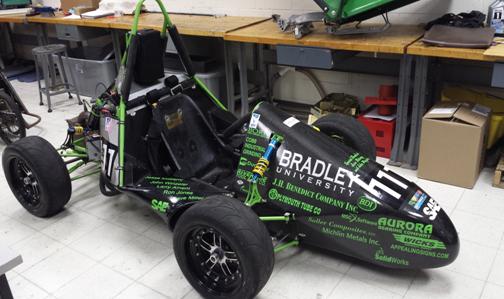
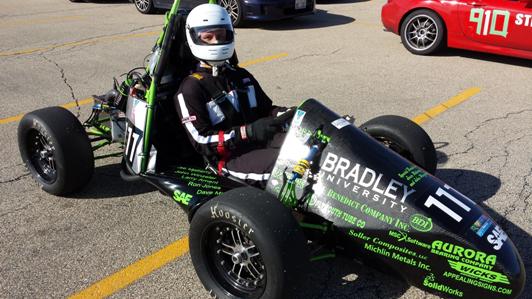
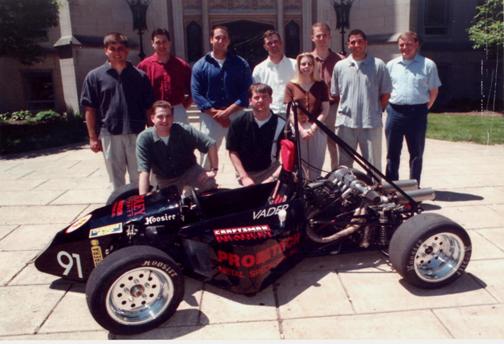
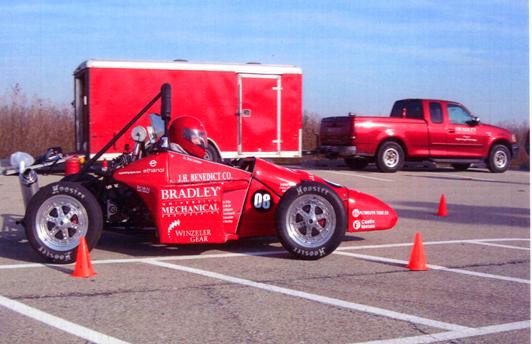
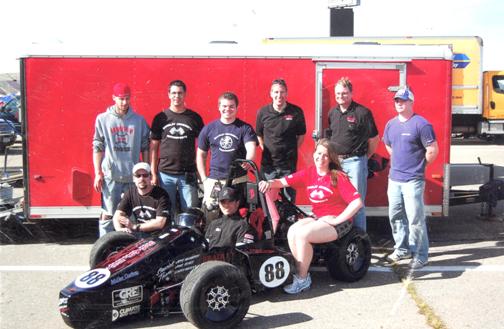
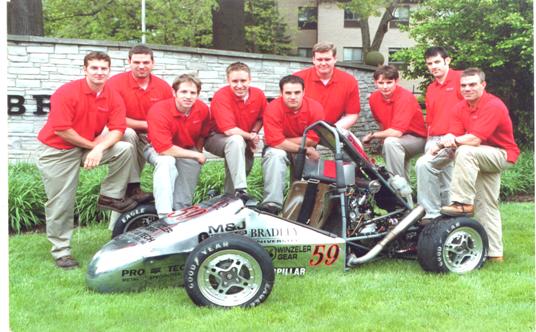
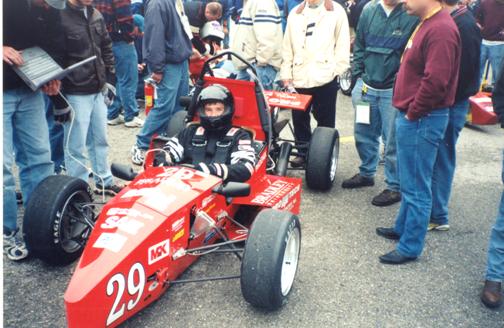
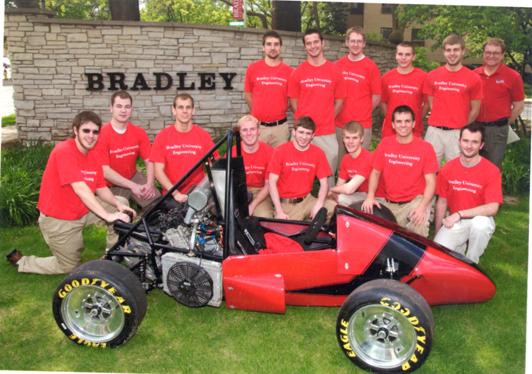
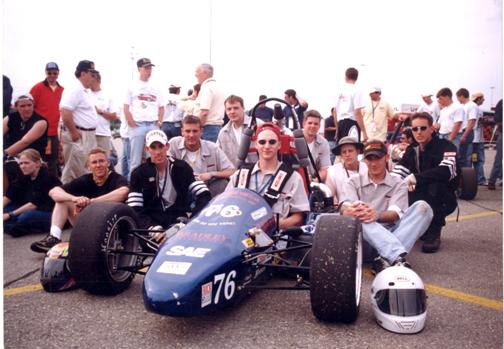
|
WebMaster: lturnbull@mail.bradley.edu |